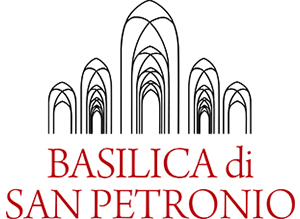THE MUSICAL CHAPEL
1. History of the Musical Chapel
2. The Musical Chapel Today
1. History of the Musical Chapel
In 1436 it was founded by Pope Eugene IV, a “schola cantorum”, governed by a master of singing in order to ensure the proper decoration of rites officiated in the basilica. The “schola cantorum” constituted the first nucleus of the musical chapel, which its original structure included only the master and eight to fourteen members.
From 1449 they were joined by an organist, while the presence of other instrumentalists in the stable staff was recorded since 1560.
In the following two centuries the chapel experimented and perfected the important innovations in the field of sacred music, that at that time were faced.
The moment of greatest height of the institution, however, coincides with the presence of illustrious figures from the fifteenth to the sixteenth century, such as the theoretician and composer Giovanni Spataro (chaplain master from 1512 to 1540), Andrea Rota (1583-1596) and Girolamo Giacobbi (1604-1629).
With the reformation of Maurizio Cazzati in 1657, which included a greater number of singers and the addition of instrumentalists as trumpeters and pipers, the golden age of the Chapel of St. Petronio began.
It became famous throughout Europe for the magnificence of its performances, involving up to one hundred and fifty elements among vocal soloists, songwriters and instrumentalists, for the doctrine of the masters who headed it (Giovanni Paolo Colonna in 1674 and Giacomo Antonio Perti in 1796 ), the quality of his musicians, among whom Giovanni Battista Vitali, Domenico Gabrielli, Giovanni Bononcini, Archangel Corelli, Giuseppe Torelli, Giuseppe Jacchini played.
The role of the Chapel was decisive not only in the sacred polyphony, but also in the instrumental music: under the Basilica vaults the first experiments of ‘big concert’ and the first pages of the cello repertoire were seen.
Between the 17th and 18th centuries new musical forms were created such as the big concert, thanks also to the addition of nationally renowned masters among the instruments of instrumentalists.
Thereafter, between 800 and 900, an inevitable decadence of the institution began, due both to the diminished appeal on the genre and to the desire to reform sacred songs to adapt it to a purely European style.
The loss of traditions and the slow departure of singers mark the actual end of the Chapel, reduced to occasional meetings on important occasions. However, in 1984 it was reconstituted and since 1996 it has been named “Arcivescovile”.
2. The musical Chapel Today
After half a century of silence, it was reestablished with two institutional aims: to promote the liturgy’s decorum through the singing and sacred music and to rediscover and enhance the musical heritage preserved in the rich archives of the Basilica.
With the intention to pursue this second goal, the Chapel has had an orchestra with original instruments, the first in Italy, and has established a strong collaboration with the most acclaimed interpreters of the so-called “ancient music”. This setting made the historically correct reproduction of many forgotten masterpieces possible, returned to the audience listening according to executive criteria, and, so, with the most faithful sound outcomes possible, according to the time of their their composition.
On the other hand, in St. Petronio the great horseshoe-shaped choir loft and the two inestimable organs of Lorenzo da Prato (1475) and Baldassarre Malamini (1596) are preserved intact: not only the music sources but also the original executive space and the historical tools.
The Chapel has performed concerts throughout Europe and boasts a wide discography; the latest CD, dedicated to the Mass of three choirs by Giacomo Antonio Perti, was published by Dynamic in 2012 and has been awarded as ‘5 diapason’ by the most authoritative French music magazine.

